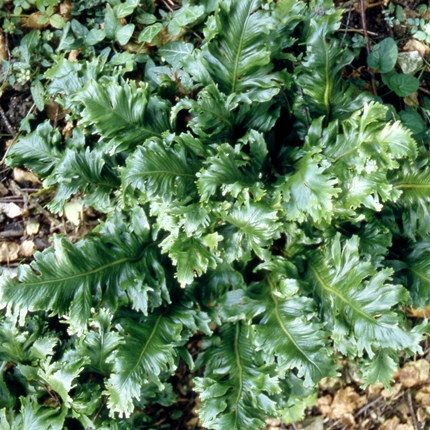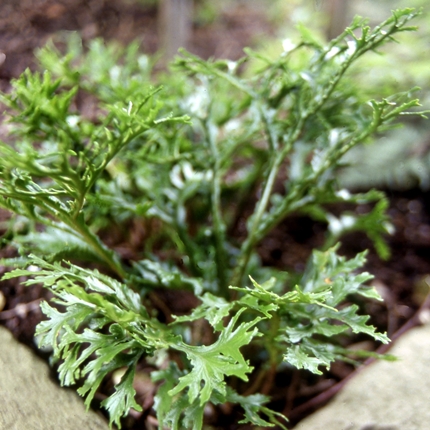Most people will not need a description of this native fern, with simple, entire, glossy evergreen fronds. It is found almost everywhere, from cliff tops to the deepest darkest wood, and very commonly on the walls of buildings, where it only seems to need a leaky gutter to provide a little moisture and it will happily clothe a whole wall. I do not think there can be a watermill anywhere in Britain which does not have a complement of hart’s tongue beside the wheel-race. In the garden, it is good in most soils, lime or acid, but appreciates sharp drainage and some shade. Hart’s tongue fern has had more changes of name than any plant I know, and you will find it listed under Phyllitis in older books.
|

|
.‘Kaye’s’ named after Kaye’s nursery in Silverdale, a good dwarf form 20cm tall, looking like a neat, evergreen lettuce with short, frilly-edged leaves. |

|
The large number of exciting cultivars includes: Crispum Group, a range of forms with crispy edges to the leaves. Forms of the 'Marginatum, 'Angustifolia' and 'Fimbrata' Groups have narrow leaves with undulating edges, giving a crisp appearance like the ruffled edges of curtains. |

|
There are also several crested forms, such as the Cristatum Group, most of which can be considered good garden forms. 'Ramo-Marginatum' is another good group of forms, with branching crinkly fronds which terminate in cresting, quite unlike a typical harts tongue, some forms are often mistaken for the tropical stags horn ferns. 'Sagittato' group have large lobes at the base of the fronds, said to be like the barbs on arrows. |

|
|